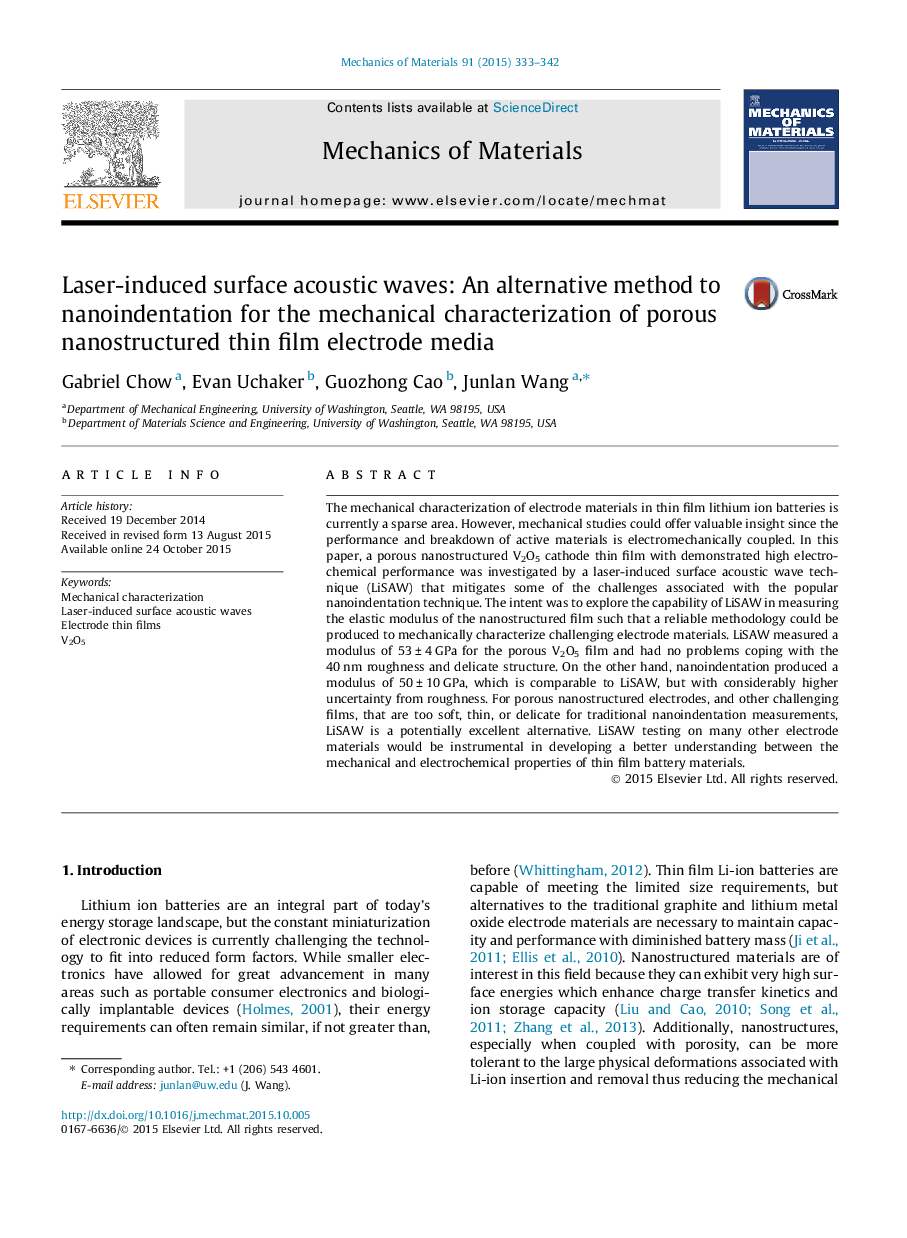| Article ID | Journal | Published Year | Pages | File Type |
|---|---|---|---|---|
| 800706 | Mechanics of Materials | 2015 | 10 Pages |
•Porous nanostructured V2O5 cathode film was electrodeposited.•Electrochemical analysis demonstrated the high energy capacity.•Mechanical property was characterized by two different methods.•LiSAW showed distinctive advantage over nanoindentation.•Application of LiSAW on other porous nanostructured electrode film is promising.
The mechanical characterization of electrode materials in thin film lithium ion batteries is currently a sparse area. However, mechanical studies could offer valuable insight since the performance and breakdown of active materials is electromechanically coupled. In this paper, a porous nanostructured V2O5 cathode thin film with demonstrated high electrochemical performance was investigated by a laser-induced surface acoustic wave technique (LiSAW) that mitigates some of the challenges associated with the popular nanoindentation technique. The intent was to explore the capability of LiSAW in measuring the elastic modulus of the nanostructured film such that a reliable methodology could be produced to mechanically characterize challenging electrode materials. LiSAW measured a modulus of 53 ± 4 GPa for the porous V2O5 film and had no problems coping with the 40 nm roughness and delicate structure. On the other hand, nanoindentation produced a modulus of 50 ± 10 GPa, which is comparable to LiSAW, but with considerably higher uncertainty from roughness. For porous nanostructured electrodes, and other challenging films, that are too soft, thin, or delicate for traditional nanoindentation measurements, LiSAW is a potentially excellent alternative. LiSAW testing on many other electrode materials would be instrumental in developing a better understanding between the mechanical and electrochemical properties of thin film battery materials.
